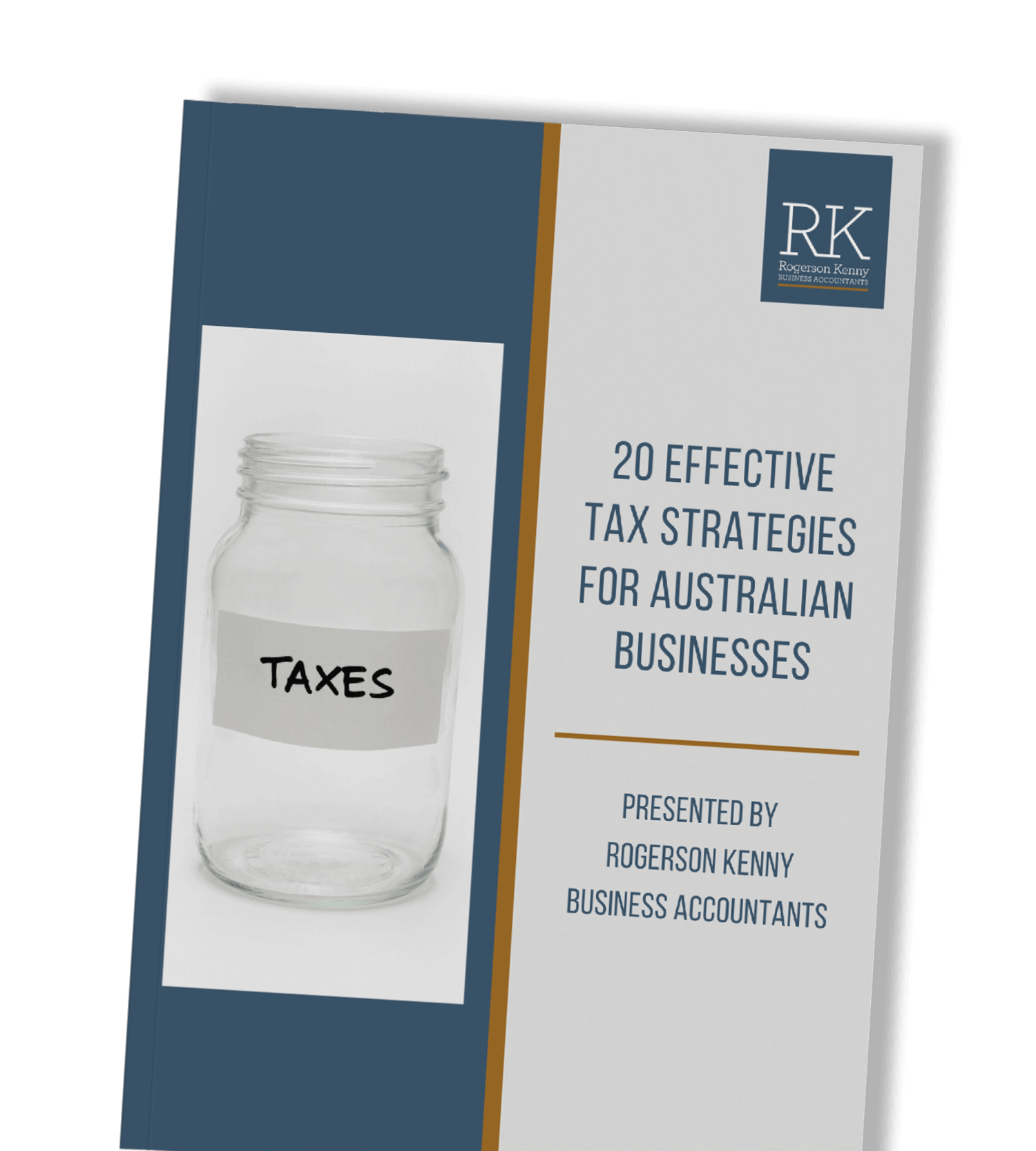Key Strategies to Reduce Tax in Your Business for 2024
Legally minimising tax obligations for your business and through your wider business structure group/family structure is something that every business should be doing annually. In our view, minimising your tax obligations starts with tax planning.
In this article, we step through the process we undertake with our clients in tax planning and how we assist them to legally reduce their tax obligations. Further, we also talk through some of the actions/options available to either minimise your tax or delay your tax obligations.
Understand Your Group Structure
The first step in legally minimising your tax, is to simply understand your group structure. This means having a diagram with all of the business entities you either control or have an investment in.
Information should include directors, shareholders, unit holders, TFNs, ABN, GST registrations, etc. It should be a detailed yet easy to consume document.
Many of our clients will have multiple business entities, such as companies, family trusts and self managed super funds. This is common for business owners to be structured this way for asset protection and to allow for the ownership of various assets.
Group Tax Planning Summary
We suggest based off your group structure diagram (as per above), that a forecast tax position for the current financial year is completed. This will involve using part actual results and part forecast.
For example, tax planning, usually undertaken April/May/June, would see nine or ten months of actual figures used and then two to three months of forecast figures.
This tax summary, would show the tax position for each entity or if the entity isn’t a tax payer (such as a unit trust or family trust) then where the tax distributions will be distributed.
This group tax summary should be your ground zero. Showing what the tax position will look like, on a worst case/no action taken scenario – and at the vary least, if no action is taken, will allow you to plan for your upcoming tax obligations.
Author’s note: its imperative tax planning is undertaken during the financial year in question. You can’t undertake tax planning post the financial year, as it will be too late to enact strategies to minimise/delay tax.
Strategies to Minimise/Delay Tax
This is the exciting part. How to legally minimise and or delay your tax.
With the above group tax planning summary, its now time to plan your tax minimisation strategies. As discussed, the above document should be your worst case tax payable scenario. The “do nothing” option.
Tax planning and tax minimisation strategies available will depend on many factors, such as:
– Your profit
– Business structure (the type of business entities you have)
– Size of your business entities (eg. do you qualify as a Small Business Entity and can you take advantage of the concessions available)
– Tax losses
– Ability to contribute to super
– New legislation that may apply
Tax Planning | Tax Minimisation | Tax Deferral Strategies can include:
Tax deductible concessional contributions into superannuation
These contributions into super are tax deductible and can be an effective way to reduce your tax obligations and build your super.
Depreciation
– This may seem automatic, however there are many different depreciation rates and types available depending on the size of entity and wider group. It is well worth doing a depreciation health check – just to make sure you are getting the best outcome.
– Small businesses with an aggregated turnover less than $10m qualify for the small business depreciation pool which is quite advantageous.
Maximise your tax deductible expenses – this goes without saying, but its worth the effort. May include:
– Write off bad debts
– Travel
– Insurance
– Interest on business loans
– Repairs and maintenance
Pre pay expenses
Depending on your entity size, you may be eligible to prepay expenses from the next financial year.
Establish a “bucket company”
If you operate in a discretionary trust, you may like to consider establishing a “bucket company”. This allows for income to be taxed at the company tax rate. A bucket company can do two main things. First is reduce the tax payable across the group and the second is smooth out high income years with lower income years. A catch when operating your business in a discretionary trust, is whatever the profit is in a year, it needs to be distributed to a taxpayer. This can see some years with high rates of tax being paid (when profit is high) and some years with relatively low rates of tax paid (when profit is low) and often – nothing in between. A company can help smooth this out. Author’s note: This can be a complex strategy and will need careful consideration.
Time the sale of an asset
You may be selling an asset – check if the asset (a capital asset) and the entity selling is eligible for the 50% CGT discount. This will allow for any gain to be reduced by 50% if the asset has been held for more than 12 months.
Purchase of a new asset
Under current depreciation rules (May 2022) most entities are eligible for instant depreciation write offs. Be careful though, as the asset needs to be installed and ready for use to be eligible. Even outside immediate asset write off rules, there are still generous depreciation advantages when purchasing an asset.
Sale of Plant and Equipment
Selling plant and equipment in your business, many don’t realise that the sale is on revenue account and often the cost base of that asset is $0 as it has been depreciated. You may have piece of plant you sell for $100k, that has been fully depreciated and that $100k will simply add to your profit. Care on the timing needs to be taken and also consideration on the timing if you are looking to purchase a new asset… try and have this in the same year as a sale for the new asset depreciation benefits.
Pay Employee Superannuation
Superannuation liability at 30 June isn’t deductible for tax purposes, unless its been paid, so bring forward this obligation and claim a tax deduction.
Company loss carry back tax offset
This allows a company to carry back a tax loss to a prior year when there was an income tax liability and receive a refund. Effectively applying the loss against prior year tax paid. This is relatively new legislation, please see more here.
How can we help you?
If this article is of interest and you would like to discuss your circumstances further, please be in touch for a confidential and cost free initial discussion. Contact us today
Best Tax Minimisation Strategies,
20 Effective Tax Strategies for Australian Businesses
Tax planning and by extension, minimising or deferring tax, is a critical aspect of running a successful business in Australia.
By implementing effective tax strategies, businesses can optimise their financial position, minimise or defer tax liabilities, and ensure compliance with ever-evolving tax laws.
In this checklist, we outline 20 key tax strategies that businesses should consider implementing to minimise or defer their tax and mitigate risks. Including how to reduce Capital Gains Tax Australia.








